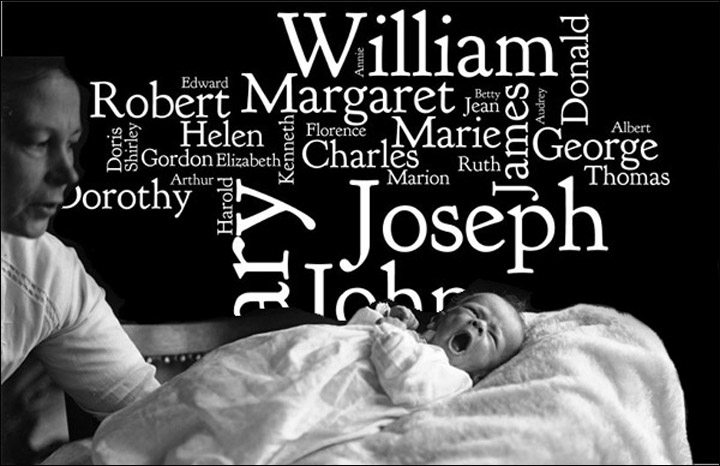Names intersect with history in ways that are sometimes clear, sometimes confusing.

But often since you can often guess the holder’s age from the name (if Chloe and Olivia were in grade school and had grandmothers named Ida and Violet, nobody would be much surprised), it’s clear that names fade in and out of fashion, sometime abruptly, sometimes slowly. The names themselves come from a complicated mix of family, cultural, religious and personal sources.
(Sometimes they reappear. The Ontario data shows that several girls’ names of the early 20th century, more or less disused for decades, are now being revived: Lillian, Hazel, Violet and Ruby.)
READ MORE: Interactive: From Aaden to Zyrelle, 20 years of Alberta baby names
Our searchable interactive covers names given to about 10 million Ontario babies since 1917. The data we built the interactive from covers 3,736 boys’ names and 5,071 girls’ names. (Names with fewer than five examples in a year weren’t included.)
Here are a few things we picked from the data:
The most popular boys’ names in 2010 were Ethan, Liam and Jacob. The most popular girls’ names that year were Olivia, Emma and Isabella.
Edwards peaked in 1936, the year that the ill-fated Edward VIII was crowned – he would abdicate before the year was out, succeeded by his younger brother George VI, a better-respected king. (In Ontario, Georges kept declining after the coronation and also during the war, which seems somehow unfair.)
Charleses and Elizabeths both peaked in 1953, the year Elizabeth II was crowned. Elizabeth has another spike after the 1959 royal tour to Canada – a marathon one by modern standards, at 45 days.
Winstons peaked in 1941.
Marilyns peaked in 1956. It’s hard to tell whether the main influence was actress Marilyn Monroe, then at the height of her career, or swimmer Marilyn Bell, whose arrival on the Canadian shore of Lake Ontario two years earlier had attracted hundreds of thousands of people.
Dorothys has been in decline since 1920, and Ernests since 1921 (farm-populist premier Ernest Drury was elected in 1919, and would serve until 1923).
Linda, a juggernaut name of the postwar baby boom, peaked in 1947 – Lindas had been rocketing upward in popularity as the Second World War progressed – and declined just as suddenly. Other classic postwar names are Donald (second peak in 1947) Barbara (peaks 1947), Sharon (peaks 1947) and Carol (peaks 1946).
Josephs, Marys and Maries peak in the late 50s and early 60s, then have a sharp decline apparently connected to Vatican II, the reform process that caused many changes in the Catholic church in that period. (Michael peaks in 1963, but with a gentler decline in following years.)
Seans peaked in 1971, followed by a dip in the late ’70s almost exactly matching a spike in Shauns.
Few Ontario parents seem to have looked to politics for inspiration, though there was a small spike of Wilfrids in 1920, the year after former prime minister Wilfrid Laurier’s death. There is an uptick of Dwights in 1945, the year Allied armies finished the liberation of Europe under U.S. Gen. Dwight Eisenhower, and another when he was elected president in the 1950s.
Brittanys peaked in 1990, and Madisons in 2001. (By 2010, Brittanys were appearing in the Ontario birth registration system at a rate of only one a month.)
The data was released to Global News by the Ministry of Government Services.



Comments